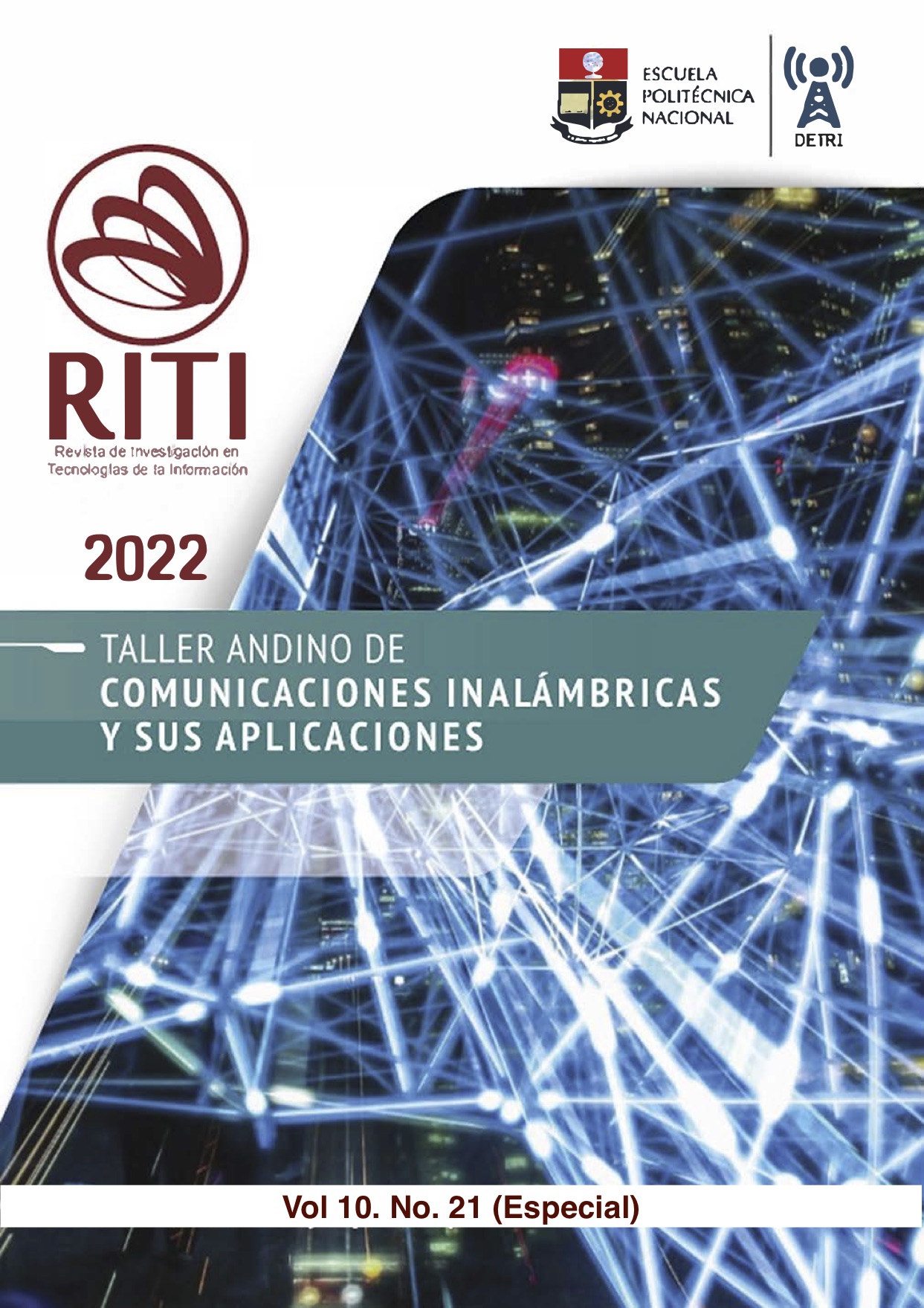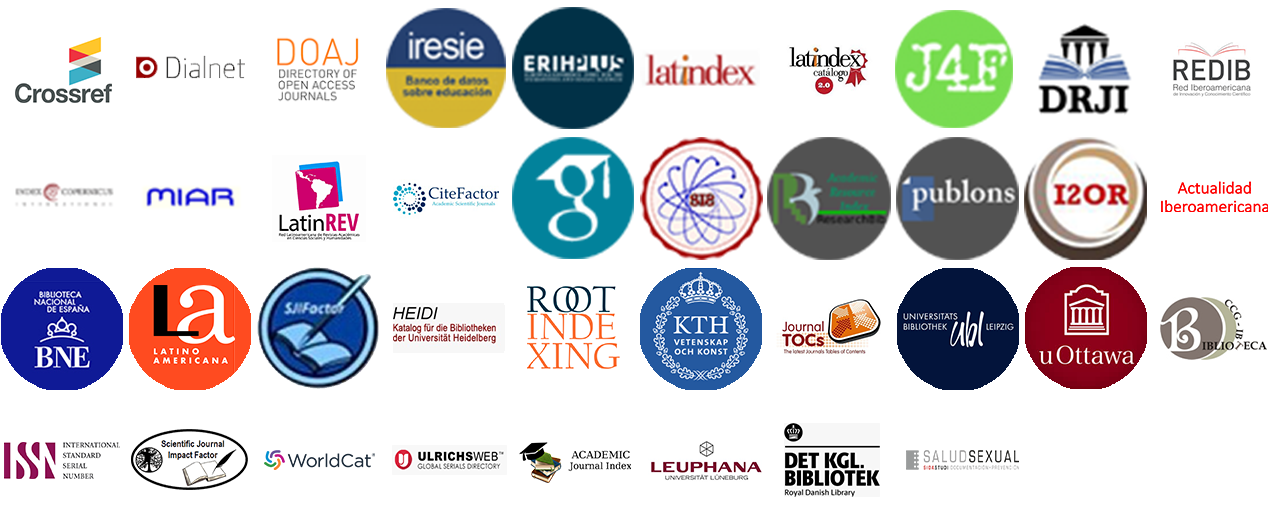A machine learning approach for quality prediction in idle-static mode and connected-mobile mode in LTE networks
DOI:
https://doi.org/10.36825/RITI.10.21.010Keywords:
LTE, Machine Learning, Decision Tree, Quality of ConnectionAbstract
In this paper, the main aims are to obtain a quality of signal prediction model in idle-static mode and a quality of connection prediction model in connected-mobile mode, for this, we apply machine learning technique to a real dataset collected from a LTE network deployed at Quito, Ecuador. The proposed models are capable to predict the conditions of low received signal strength and low data rate which is important to select the appropriate method that will most likely offer the highest quality of service. The proposed schemes based on decision tree improves in the idle-static mode and present an accuracy of 67% approximately when compared to the connected-mobile mode, and finally, we propose future works.
References
Jha, S. K., Rokaya, R., Bhagat, A., Khan, A. R., Aryal, L., (2017). LTE Network: Coverage and Capacity Planning-4G Cellular Network Planning around Banepa. International Conference on Networking and Network Applications (NaNA), Kathmandu, Nepal. https://doi.org/10.1109/NaNA.2017.23
Divya, R., Hüseyin, A. (2009). 3GPP – Long Term Evolution – A Technical Study. Spring.
Ericsson. (2009). LTE – an introduction. Long Term Evolution (LTE) offers a superior user experience and simplified technology for next-generation mobile broadband. https://telecoms.com/files/2009/03/lte_overview.pdf
Casas, P. (2018). Machine learning models for wireless network monitoring and analysis. IEEE Wireless Communications and Networking Conference Workshops (WCNCW), Barcelona, Spain. https://doi.org/10.1109/WCNCW.2018.8369024
Casas, P. D’Alconzo, A., Wamser, F., Seufert, M., Gardlo, B., Schwind, A., Tran-Gia, P., Schatz, R. (2017). Predicting QoE in cellular networks using machine learning and in-smartphone measurements. Ninth International Conference on Quality of Multimedia Experience (QoMEX), Erfurt, Germany. https://doi.org/10.1109/QoMEX.2017.7965687
Hou, Q., Zhou, Yifan. F., Peng, X., Zhang, L. (2014). Study of TD-LTE Coverage and Uplink/Downlink Power Budget in High-Speed Train. Applied Mechanics and Materials, 716-717, 117-1420. https://doi.org/10.4028/www.scientific.net/amm.716-717.1417
Afroz, F., Subramanian, R., Heidary, R., Sandrasegaran, K., Ahmed, S. (2015). SINR, RSRP, RSSI and RSRQ Measurements in Long Term Evolution Networks. International Journal of Wireless & Mobile Networks, 7 (4), 113 − 123. http://dx.doi.org/10.5121/ijwmn.2015.7409
Lin, C. C., Sandrasegaran, K., Mohd Ramli, H. A., Basukala, R. (2011). Optimized Performance Evaluation Of LLE Hard Handover Algorithm With Average RSRP Constraint. International Journal of Wireless & Mobile Networks (IJWMN), 3 (2), 1-16. http://dx.doi.org/10.5121/ijwmn.2011.3201
Vukanic Stojanovic, I., Koprivica, M., Stojanovic, N., Neskovic, A. (2020). Analysis of the impact of network architecture on signal quality in LTE technology. Serbian Journal of Electrical Engineering, 17 (1), 95-109. http://dx.doi.org/10.2298/SJEE2001095S
Published
How to Cite
Issue
Section
License
Copyright (c) 2022 Revista de Investigación en Tecnologías de la Información

This work is licensed under a Creative Commons Attribution-NonCommercial-NoDerivatives 4.0 International License.
Esta revista proporciona un acceso abierto a su contenido, basado en el principio de que ofrecer al público un acceso libre a las investigaciones ayuda a un mayor intercambio global del conocimiento.
El texto publicado en la Revista de Investigación en Tecnologías de la Información (RITI) se distribuye bajo la licencia Creative Commons (CC BY-NC
 ), que permite a terceros utilizar lo publicado citando a los autores del trabajo y a RITI, pero sin hacer uso del material con propósitos comerciales.
), que permite a terceros utilizar lo publicado citando a los autores del trabajo y a RITI, pero sin hacer uso del material con propósitos comerciales.



